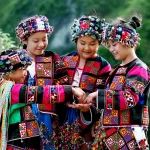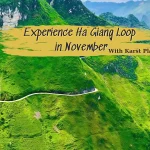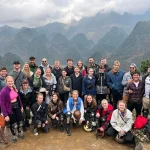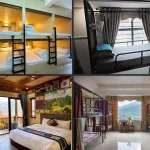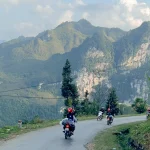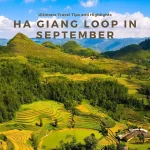Lung Ho, located in the heart of Ha Giang, is a hidden gem that offers breathtaking landscapes, rich cultural heritage, and historical landmarks. For travelers seeking an authentic and serene experience, Lung Ho provides the perfect escape. Let’s Karst Plateau dive into what makes this destination special, from its scenic views to its cultural and historical significance.
1. Overview of Lung Ho

Lung Ho is famous for its stunning natural beauty in the Ha Giang Loop
Lung Ho Commune, Ha Giang is one of the attractive destinations for tourists, especially young people who are passionate about conquering and exploring. This is a commune in the Yen Minh district, which has an area of about 54 km2 and is divided into 23 villages. This place is known for its scenic beauty and cultural diversity. Surrounded by majestic mountains and verdant valleys, it remains largely untouched by mainstream tourism.
This serene environment, combined with its rich local traditions, makes Lung Ho an ideal destination for travelers seeking an authentic and peaceful retreat.
2. Scenic Lung Ho Landscapes
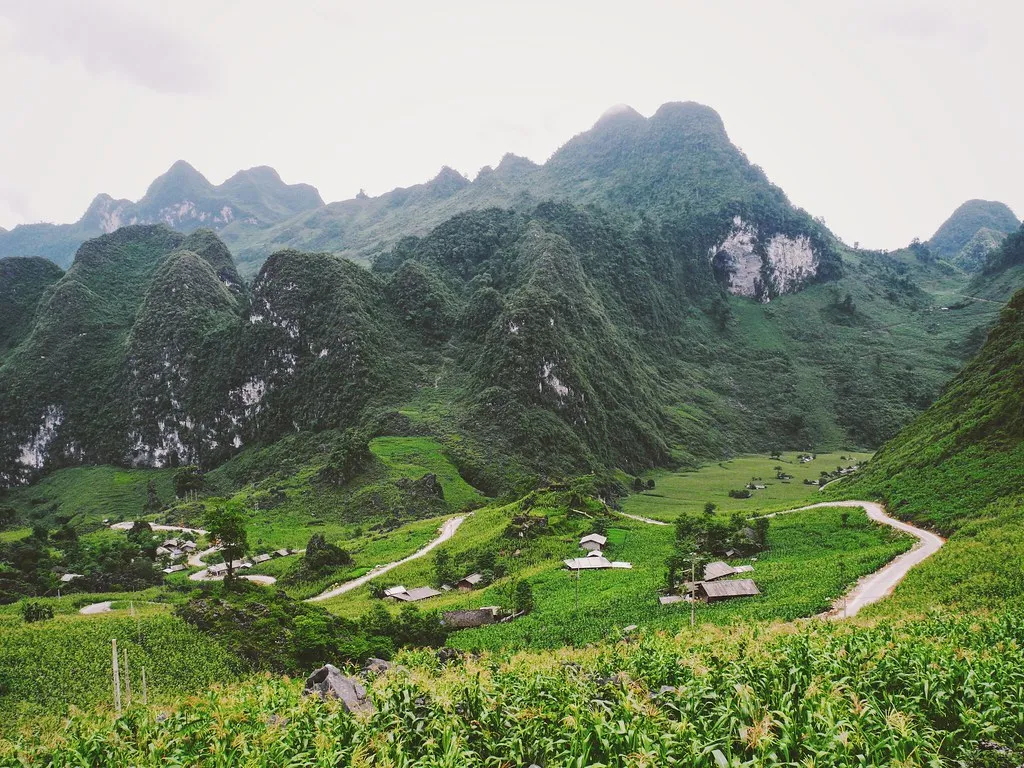
The landscape of Lung Ho is dominated by majestic mountains and lush green valleys that exude serenity
The landscapes of Lung Ho are a feast for the eyes, characterized by their majestic mountains and valleys, rich biodiversity, and scenic routes.
Majestic Mountains and Valleys: Lung Ho is dominated by towering mountain ranges that create a dramatic and awe-inspiring backdrop. These majestic peaks are flanked by lush valleys that weave through the landscape, offering stunning views and a sense of tranquility. As you explore the area, you’ll find yourself surrounded by the grandeur of these natural formations, with mist often enveloping the peaks and adding an ethereal quality to the scenery.
Rich Biodiversity: The region’s diverse ecosystems support a wide array of flora and fauna, making Lung Ho a haven for nature enthusiasts. The varying elevations and habitats foster a rich biodiversity, including rare plant species and a variety of birdlife. This natural richness is particularly evident in the vibrant colors of the flora and the sounds of wildlife, contributing to the area’s enchanting atmosphere.
Scenic Routes: Lung Ho is known for its scenic routes that provide breathtaking views at every turn. Whether you’re driving along winding roads or trekking through verdant hills, the landscape offers an ever-changing panorama of natural beauty. The routes offer opportunities for both leisurely drives and more challenging hikes, allowing you to fully immerse yourself in the stunning environment. Each journey through Lung Ho reveals new vistas, from panoramic mountain views to serene river scenes, making it a memorable destination for exploration and photography.
3. The Rich Cultural Heritage of Lung Ho
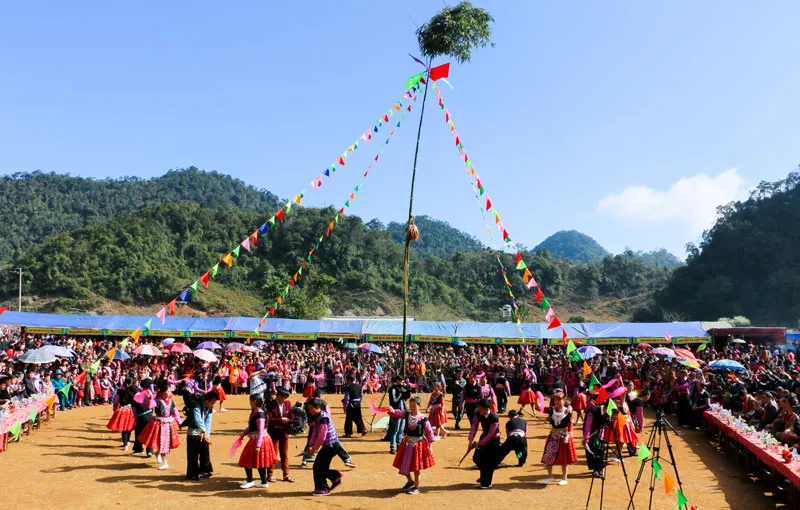
Gau Tao Festival is a major event that attracts both locals and tourists, offering a unique cultural experience
Lung Ho is home to several ethnic communities, including the Tay, Hmong, and Dao people. These groups maintain traditional lifestyles and customs, offering visitors a chance to experience local culture up close. The rich cultural heritage of Lung Ho is showcased through its vibrant festivals and diverse cuisine, providing a comprehensive view of the region’s traditions.
Festivals: One of the most notable festivals in Lung Ho is the Gau Tao Festival. Celebrated by the Hmong people, this annual event takes place in the first lunar month and is a lively celebration of community spirit and cultural heritage. The festival features traditional dances, music performances, and colorful parades. It is also an occasion for locals to showcase their traditional costumes and participate in various games and competitions. Visiting Lung Ho during the Gau Tau Festival offers a unique opportunity to immerse yourself in the local customs and witness the vibrant cultural expressions of the Hmong community.
Cuisine: The cuisine of Lung Ho is as diverse as its cultural heritage. Local dishes reflect the traditional cooking methods and ingredients of the Tay, Hmong, and Dao people. Some must-try dishes include “Thang Co“, a hearty stew made from beef or horse meat, and “Banh Cuon“, a type of steamed rice roll filled with pork and mushrooms. Each dish is prepared with fresh, local ingredients and often includes aromatic herbs and spices that are integral to the region’s flavors. Sampling the local cuisine is an essential part of the Lung Ho experience, offering a delicious taste of the area’s culinary traditions.
Engaging with local communities and staying in homestays will provide you with a deeper understanding of their way of life. By participating in daily activities, enjoying traditional meals, and attending local festivals, you can gain valuable insights into the rich cultural tapestry of Lung Ho.
4. Historical Significance: The French Fort and Wall
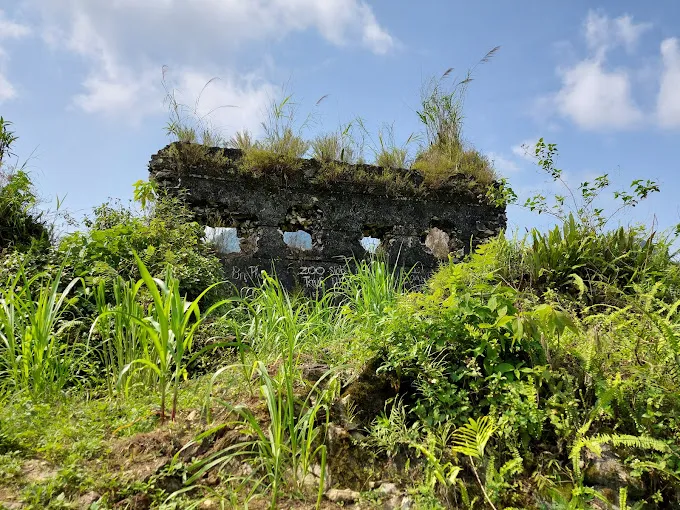
The Fort and the French Wall are not only historically significant but also architecturally impressive
A notable historical aspect of Lung Ho is the French Fort and Wall, remnants of Vietnam’s colonial era. Built by the French to exert control over northern Vietnam, these structures offer valuable insights into the region’s past. Here’s a closer look at their architectural significance, historical context, and ongoing preservation efforts:
Architectural Significance: The French Fort and Wall are remarkable examples of colonial military architecture. The fort’s design reflects the strategic considerations of the time, featuring robust walls and defensive structures designed to withstand attacks. The fort’s layout includes a series of bunkers and watchtowers, positioned to provide a commanding view of the surrounding area. The architecture not only served a military purpose but also symbolized the French attempt to establish dominance over the region. Today, the fort’s remaining structures provide a fascinating glimpse into the construction techniques and military strategies of the colonial period.
Historical Context: The French Fort and Wall were constructed in the late 19th and early 20th centuries as part of France’s efforts to consolidate control over northern Vietnam. The fort played a crucial role in the French colonial strategy, serving as a base for administrative and military operations. It was strategically positioned to oversee key routes and secure the region from potential uprisings. The fort’s history is intertwined with Vietnam’s struggle for independence, and it stands as a reminder of the country’s colonial past and the resilience of its people.
Preservation Efforts: Efforts are ongoing to preserve the French Fort and Wall as important historical and cultural landmarks. Local authorities and heritage organizations are working to maintain and protect these sites from deterioration. Conservation projects aim to stabilize the structures, restore key features, and enhance the site’s accessibility for visitors. Educational programs and guided tours are also part of these efforts, helping to raise awareness about the historical significance of the fort and wall. By supporting these preservation initiatives, visitors contribute to safeguarding Lung Ho’s historical heritage for future generations.
5. Top Activities in Lung Ho
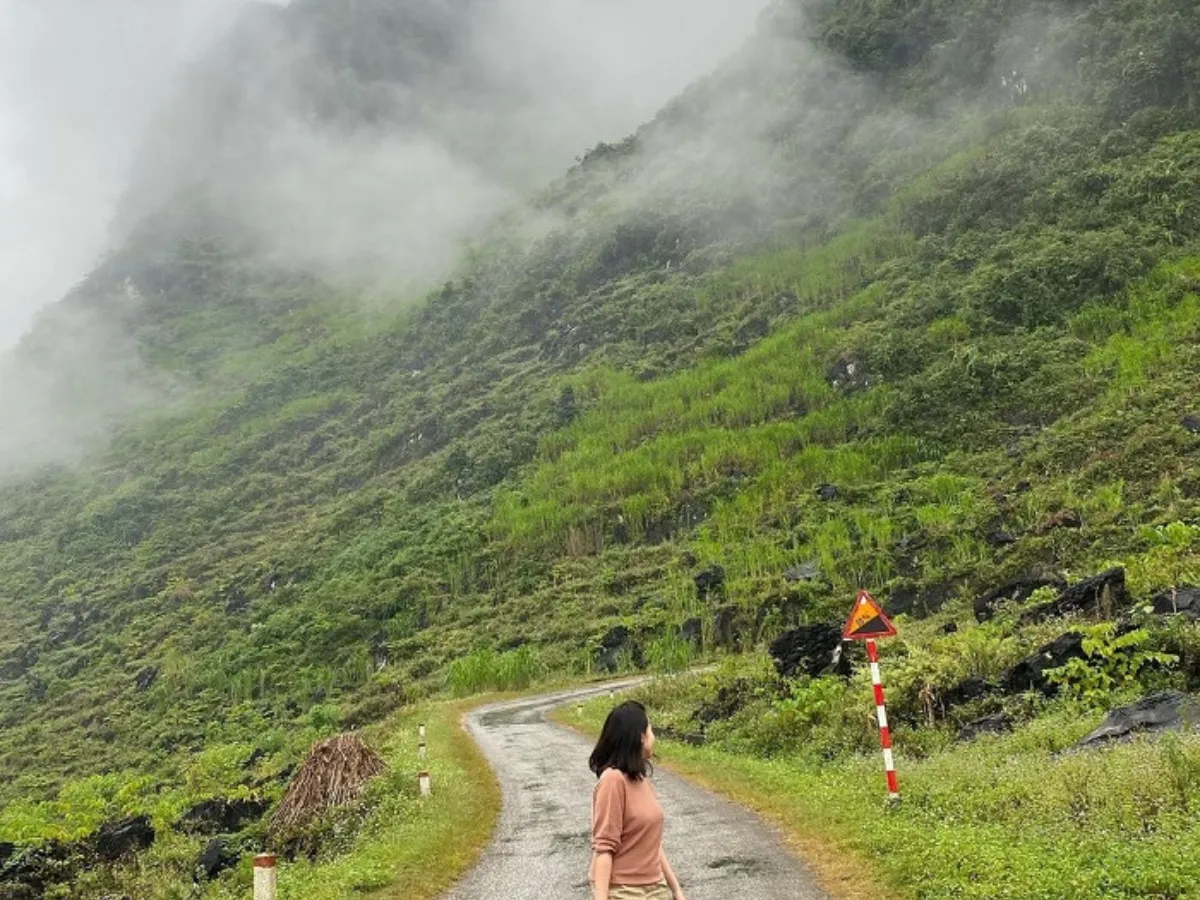
Capture the stunning natural beauty from mist-covered peaks
Lung Ho offers a variety of activities that cater to different interests, ensuring that every visitor can find something to enjoy:
Trekking: Embark on exhilarating treks through Lung Ho’s scenic trails, which lead you through lush forests, rolling hills, and remote villages. These trails offer not only breathtaking views of the natural landscape but also a chance to experience the tranquility of rural life. Each hike provides unique perspectives of the area’s diverse terrain, from verdant valleys to dramatic mountain vistas.
Cultural Tours: Immerse yourself in the rich cultural tapestry of Lung Ho by visiting local ethnic communities. Participate in traditional activities such as weaving, cooking, and folk performances to gain a deeper understanding of the region’s cultural heritage. Enjoy authentic local cuisine, which reflects the diverse culinary traditions of the Tay, Hmong, and Dao people, and engage with the friendly locals to learn about their daily lives and customs.
Photography: Lung Ho’s varied landscapes and vibrant cultural scenes make it a paradise for photographers. Capture the stunning natural beauty, from mist-covered peaks and golden fields to serene rivers and traditional village life. The dynamic interplay of light and shadow across the landscape offers endless opportunities for striking photographs, while the colorful festivals and local customs provide rich subjects for capturing moments of cultural significance.
Historical Exploration: Discover the historical richness of Lung Ho by exploring the French Fort and Wall. These colonial-era structures offer a glimpse into Vietnam’s past, showcasing the architectural and strategic efforts of the French in northern Vietnam. Learn about the historical context and significance of these landmarks through guided tours, and appreciate their role in shaping the region’s history while enjoying panoramic views of the surrounding landscape.
7. Tips for Visiting Lung Ho
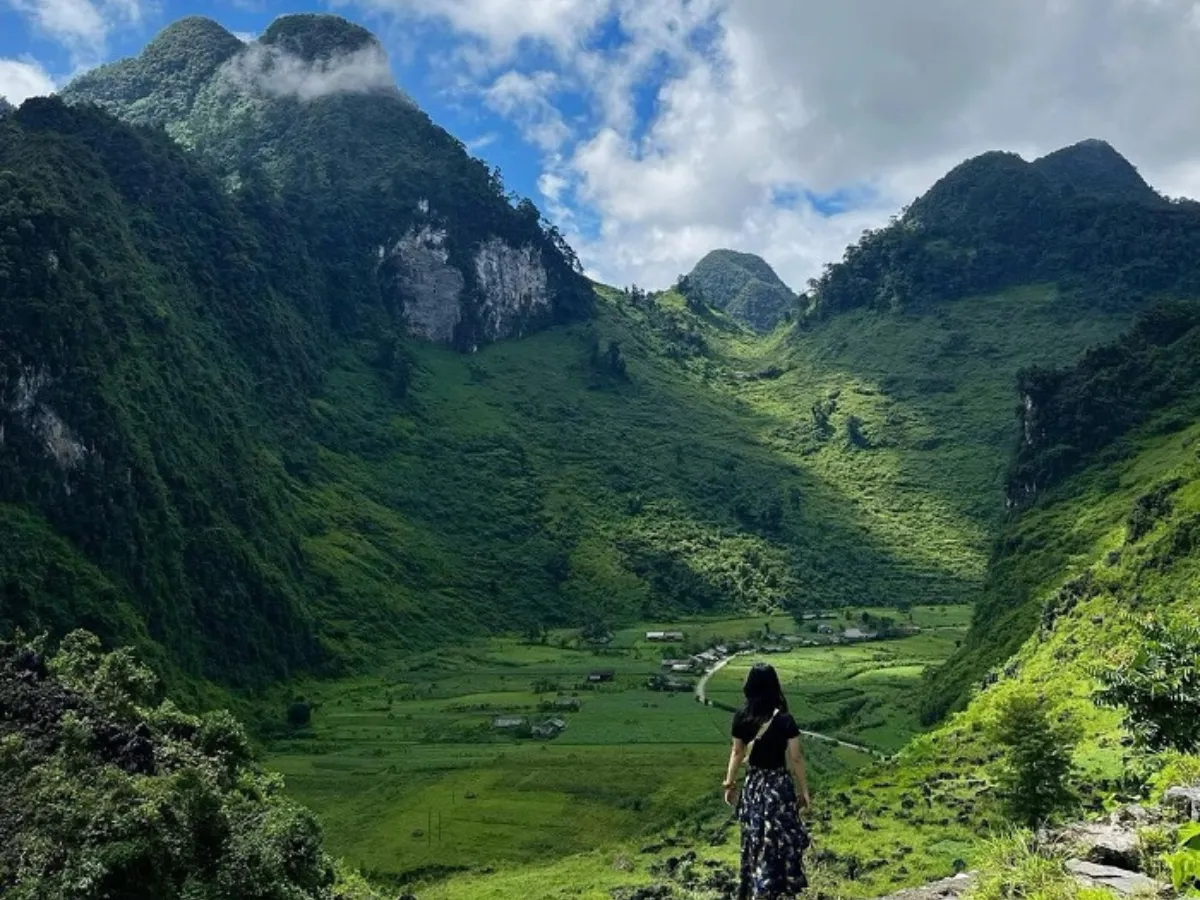
The ideal time to visit Lung Ho is during the dry season, which lasts from October to April
- Best Time to Visit: The ideal time to visit Lung Ho is during the dry season, which lasts from October to April. During these months, the weather is typically clear and pleasant, making it perfect for outdoor activities such as trekking and exploring scenic routes. The dry season also ensures that the roads are in better condition, and the risk of rain disrupting your travel plans is minimized.
- Local Etiquette: When visiting local villages in Lung Ho, it’s important to dress modestly to show respect for local customs and traditions. Many of the ethnic communities in the area have conservative dress codes, so wearing appropriate clothing is appreciated. Additionally, always ask for permission before taking photos of people or their property. This courtesy helps build trust and ensures that you’re respecting the privacy and cultural sensitivities of the local residents.
- Transportation: To fully explore Lung Ho and its surrounding areas, consider renting a motorbike or joining a guided tour. Renting a motorbike gives you the flexibility to travel at your own pace and reach more remote locations, while guided tours offer the advantage of local expertise and insights into the region’s history and culture. Both options provide a convenient way to navigate the often rugged terrain and make the most of your visit.
- Accommodation: For an authentic experience and to support the local community, consider staying in local homestays. These accommodations offer a unique opportunity to live with local families, learn about their daily routines, and enjoy traditional meals. Homestays not only provide a more immersive cultural experience but also contribute to the local economy, helping to sustain the community’s way of life.
Lung Ho, Ha Giang, offers an extraordinary blend of natural beauty, cultural heritage, and historical intrigue. From its stunning landscapes to its rich traditions and historical landmarks, Lung Ho promises a memorable adventure. For more information and to plan your trip, visit Karst Plateau and start exploring the pristine beauty of Lung Ho today!



